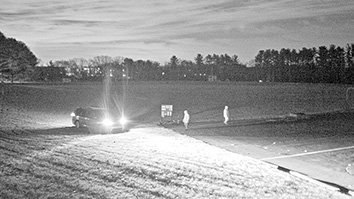
Navigating genomes just became easier with dynamically responsive zoom and high-density display.
If instructions for building home furniture seem daunting, imagine making sense out of the instructions for life contained in a genome. As complete sets of genetic instructions housed within cells’ DNA, genomes are vast, intricate, and frequently changing.
To help navigate genetics, SRI has debuted a major update to its Genome Explorer. Akin to web browsers, genome browsers are interactive platforms that find information within huge genome databases. SRI’s Genome Explorer now offers rapid, responsive zooming and panning of genome visualizations, while providing displays with high information density that can be parsed by users.
“Genome browsers are essential question-answering tools for biotechnologists, geneticists, and other bench scientists, as well as teachers and students,” said Peter Karp, SRI’s Technical Director of the Bioinformatics Research Group and a developer of Genome Explorer. “With this update, we’ve made information discovery faster, easier, and more powerful.”
In a new study published in mSystems, Karp and his colleagues present the capabilities of Genome Explorer and compare it to other genome browsers in use today. The need for these tools emerged early in modern genomics research, with the roots of SRI’s Genome Explorer tracing back to 1995, when the first complete genome for a free-living organism, Haemophilus influenzae, was sequenced.
Deft zooming
Regarding zoom functionality, genome browsers must allow scientists to view genomes through a huge range of spatial scales. The scale starts from the highest, broadest level of a chromosome — the tightly packed strands of genetic material found in organism-specific sets in cells — down to individual gene sequences.
Even simple genome organisms scaling around 1500 can be difficult to capture. Such scale can be analogous to a bird’s eye view of a city, say, at an altitude of 1500 feet, all the way down to reading street signs, and everything in between. Sticking with the analogy, Karp likens the spatial scale navigation in genome browsers to the experience of using digital maps to get directions and find specific areas of interest.
“Just as you look at a map to answer questions about spatial relationships, you look at a genome browser to answer questions about gene groups and genetic control elements and surroundings, for example,” Karp said. “That kind of information offers insights about when genes are turned on and off, which is perhaps critical to your investigation.”
“Our approach helps users grasp spatial relationships within a genome quickly and reliably.” — Peter Karp
The new Genome Explorer has made the zoom function smoother and faster. Users can zoom in real-time to find the scale that answers questions, avoiding disruptive, time-consuming delays that can slow researchers down. As the zoom deepens, more information pops up, such as gene names, transcription factor names, small RNA-binding sites, and more. For further ease of navigation, Genome Explorer centers its zoom on the user’s mouse position, keeping track of the original context.
User-friendly display
Another distinguishing feature of Genome Explorer is its graphical UI that effectively communicates spatial relationships among the elements. The Genome Explorer offers a more intuitive display than most other browsers, displaying associated gene diagrams alongside the data search. This approach efficiently offers more vertical space to display information, showing where genomic elements are superimposed over each other, as is typical, while conveying the overall genetic sequence.
“Our approach helps users grasp spatial relationships within a genome quickly and reliably,” said Karp.
The browser will be extended to offer its fast, fluid browsing to other kingdoms of life soon. Karp encourages researchers to sample the free Escherichia coli database through SRI’s exclusive 20,000+ genomes database BioCyc.
“We’re excited for our current Genome Explorer users to experience the new enhancements and for potential users to check us out,” said Karp. “Genome Explorer is an excellent tool for biology and genetics research.”
Learn more about our innovations in health.



